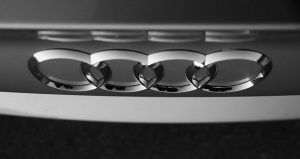Mastering PCP Claims: End-of-Agreement Vehicle Condition Guide
When concluding a Personal Contract Purchase (PCP) agreement in the UK, understanding the PCP claims…….

When concluding a Personal Contract Purchase (PCP) agreement in the UK, understanding the PCP claims process is essential for a smooth transition at the end of your contract. Whether you choose to return the vehicle, purchase it outright, or enter a new PCP agreement, you must submit a completed claim form along with evidence such as service logs and photos documenting the car's condition. The finance company will assess the car's fair market value against its expected value based on mileage, age, and condition, considering 'fair wear and tear.' Any excess mileage or damage beyond this could result in additional charges. It's crucial to stay within your agreed mileage limit to avoid complications. Upon settling any outstanding payments, you can either return the vehicle or buy it outright. The PCP claims process is designed for clarity, with comprehensive guidelines provided by finance companies. To navigate the end of your PCP agreement effectively, ensure you follow these guidelines, maintain accurate records throughout the contract, and notify your provider of your intended action within the stipulated notice period to avoid additional charges or complications. For those considering another PCP after returning their vehicle, or purchasing out their current lease, it's advisable to explore the market for favorable financing options and carefully consider your next steps based on your financial status and personal needs.
Navigating the nuances of Personal Contract Purchase (PCP) agreements can be a pivotal aspect of vehicle leasing in the UK. This article demystifies the process of submitting a PCP claim and offers insights into assessing your vehicle’s condition at the agreement’s conclusion. Understanding the intricacies of PCP claims is essential for lessees looking to transition smoothly into their next vehicle or ownership. From initial claim submission to finalizing your agreement, this guide will navigate you through the UK’s PCP claim framework, ensuring you’re well-prepared for the end of your lease term.
- Understanding PCP Claims and Their Role in Vehicle Leasing
- The Process of Submitting a PCP Claim in the UK
- Assessing Your Vehicle's Condition at the End of Your PCP Agreement
- Navigating the Final Steps: Settling Your PCP Claim and Choosing Your Next Move
Understanding PCP Claims and Their Role in Vehicle Leasing

Understanding PCP claims is crucial for individuals engaged in personal contract purchase (PCP) leasing agreements in the UK. PCP is a popular financing option that allows drivers to lease a car for an agreed term, with the option to purchase it at the end of the contract. At the end of the agreement, the customer pays the final balloon payment if they choose to own the vehicle. However, should the consumer decide not to keep the car, they are responsible for returning it while adhering to its fair market value, as determined by the PCP claims process. This process involves an assessment of the vehicle’s current condition, mileage, and market value at the end of the contract term. The PCP claim form is submitted along with supporting documents such as service logs, proof of mileage, and photos that provide a clear picture of the car’s state to ensure transparency and fairness for both parties. Understanding the PCP claims procedure is essential for lessees to navigate their obligations at the end of the agreement, whether they opt to return the vehicle or exercise the option to purchase it outright. In the UK, PCP claim processes are standardized, yet each finance company may have its own specific guidelines and criteria, making it imperative for lessors to familiarize themselves with these before the contract’s conclusion. By doing so, they can ensure a smooth and hassle-free end to their PCP agreement, regardless of their decision to retain or return the vehicle.
The Process of Submitting a PCP Claim in the UK

When the contract period for a Personal Contract Purchase (PCP) vehicle in the UK comes to an end, customers are entitled to submit a claim to settle their agreement. This process involves assessing the vehicle’s condition and its mileage against the initial agreement terms. To initiate a PCP claims process, the vehicle owner must provide all necessary documentation, including service records, the V5C registration certificate, and evidence of insurance. These documents serve as proof of the vehicle’s maintenance and condition at the end of the contract. Once submitted along with the completed finance settlement form, the finance company will inspect the vehicle. They will evaluate its fair market value, considering factors such as age, mileage, and overall condition. If there are any outstanding payments or additional charges due to excess mileage or damage beyond what is considered ‘fair wear and tear,’ these must be settled before the vehicle’s ownership can be transferred. Upon successful settlement of the PCP agreement, the owner may return the vehicle or opt to purchase it outright. The PCP claims UK process is designed to be transparent, with clear guidelines provided by the finance company. It is essential for vehicle owners to familiarize themselves with these guidelines and adhere to them to ensure a smooth end-of-agreement experience.
Assessing Your Vehicle's Condition at the End of Your PCP Agreement

When your Personal Contract Purchase (PCP) agreement reaches its conclusion, it’s crucial to accurately assess your vehicle’s condition to navigate the final stages smoothly. This involves a thorough inspection of your car, ensuring that any wear and tear is accounted for and that the vehicle remains within the agreed mileage limit. Failure to adhere to these guidelines can lead to complications with pcp claims in the UK. During this process, it’s essential to document your vehicle’s condition through photographs and detailed notes, providing clear evidence should there be any discrepancies upon return. This due diligence can significantly strengthen your position when settling pcp claims, ensuring that you are not unfairly charged for expected depreciation or wear and tear. Additionally, when the time comes to either return the vehicle or hand it over to a new owner, having a clear record of its condition at the end of the agreement will facilitate a transparent and fair transaction. Remember to follow the lender’s guidelines for condition reporting, as this will guide you on how to present your findings during the pcp claims process in the UK. Keeping meticulous records and understanding the terms of your PCP agreement from the outset can help alleviate any concerns at the end of your contract.
Navigating the Final Steps: Settling Your PCP Claim and Choosing Your Next Move

As your Personal Contract Purchase (PCP) agreement reaches its conclusion, it’s time to navigate the final steps with care and attention. The settlement process for a PCP claim in the UK is designed to be straightforward, yet it requires diligent adherence to the terms outlined in your original agreement. Upon reaching the end of your contract, you have three main options: handing back the vehicle, purchasing it outright, or selecting another vehicle through a new PCP agreement. Each option has its own set of procedures that must be followed to ensure a smooth transition.
To settle your PCP claim, you’ll need to provide all necessary documentation and adhere to the specified notice periods. Typically, this involves informing your finance provider of your chosen course of action, paying or settling any outstanding payments, including optional final payments if applicable, and arranging for the vehicle to be collected or delivered as per the agreement’s end-of-contract instructions. It’s crucial to keep track of all communications and adhere to deadlines to avoid any potential complications or additional charges. Once the finance provider has received your PCP claim and all associated payments, they will issue a settlement statement. This statement will detail any remaining balance, if applicable, or confirm that you’ve fulfilled your obligations under the agreement.
Choosing your next move post-PCP is a decision that should be made with consideration of your current financial situation, personal needs, and future plans. If opting to change vehicles through another PCP agreement, you’ll need to assess the market for competitive financing options and select a vehicle that suits your requirements and budget. Remember to compare different deals and lenders to ensure you’re getting the best value for your next contract. Alternatively, if you decide to purchase your current vehicle outright, be sure to arrange for the necessary funds transfer to complete the ownership transfer. Lastly, if you prefer to hand back the keys, ensure you do so according to the agreement terms, as any damage or outstanding payments could result in additional costs. Throughout this process, maintaining open communication with your finance provider is key to a hassle-free PCP claim settlement and transition into your next vehicle arrangement.
When concluding a Personal Contract Purchase (PCP) agreement, understanding the process of submitting PCP claims in the UK is paramount. This guide has demystified the steps involved in assessing your vehicle’s condition at the end of your contract and navigating the final stages to settle your PCP claim efficiently. Whether opting to hand back the vehicle, pay a final lump sum to own it outright, or part-exchange it towards a new model, the information provided ensures that consumers are well-equipped to manage their PCP claims responsibly and knowledgeably. For those seeking clarity on PCP end-of-agreement vehicle conditions and the associated claim procedures, this article serves as an authoritative resource, reflecting the importance of due diligence in personal finance management within the UK automotive leasing market.







